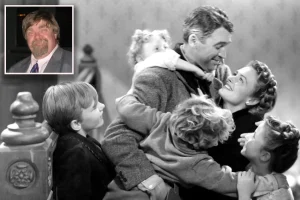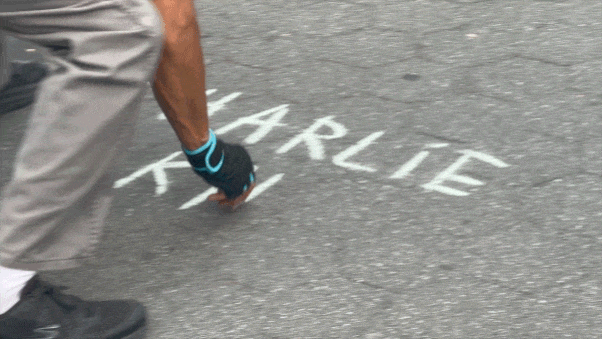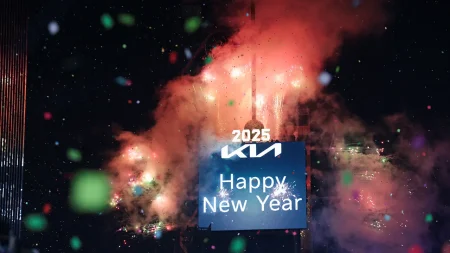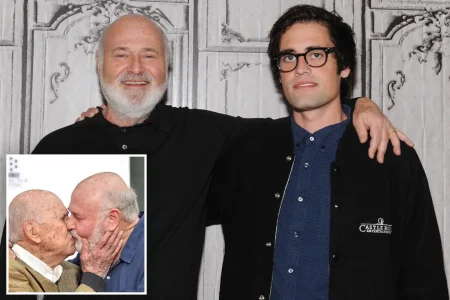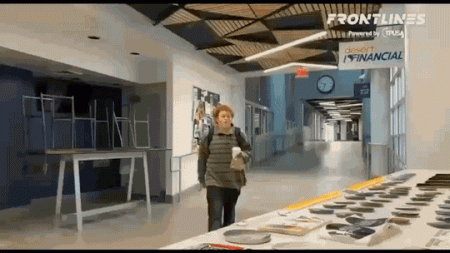The Art of Dialogue: One Artist’s Response to Political Division
In the heart of New York City, where sidewalks serve as both pathways and canvases, Colombian-American artist Felix Morelo has turned the simple act of drawing chalk circles into a powerful form of social commentary. His colorful chalk circles, bearing phrases like “Good Luck Spot” or “Hugging Spot,” have long invited passersby to interact—either by stepping inside or consciously avoiding them. Recently, however, Morelo’s work has taken on a more contentious dimension following the assassination of conservative activist Charlie Kirk. The artist began creating “Charlie Kirk spots” across the city, sparking reactions that mirror America’s deepening political divide. While some defaced his work by scrawling “Nazi” beside the circles or creating competing designs, others embraced the tribute, revealing the raw emotions that surround political discourse in today’s America.
What motivated Morelo’s Kirk-themed artwork wasn’t political alignment but rather a disturbing observation: the celebration of violence against political figures. “I couldn’t find a reason for somebody to be executed,” Morelo explained while speaking in Manhattan’s Washington Square Park. “It’s like, even hardcore criminals get their due process.” Though he didn’t agree with all of Kirk’s positions, Morelo had respected the conservative influencer enough to consider engaging him in debate before his death. The artist’s decision to repeatedly write Kirk’s name across New York’s sidewalks came from a place of both commemoration and frustration—a desire to keep Kirk’s message alive while simultaneously expressing anger toward those celebrating his death. Yet in a moment of self-reflection, Morelo recognized something unsettling: he had previously experienced similar feelings of satisfaction at others’ misfortunes, a realization that added layers of complexity to his artistic expression.
This introspection became central to Morelo’s creative process. He began viewing his chalk circles as more than just art—they became invitations to dialogue, opportunities to understand those he considered ideological opponents. The reactions to his Kirk tributes proved as diverse as they were intense. Some people aggressively smudged his work, while others sent threatening messages or confronted him directly on the street. “I’ve noticed that they spill their hate or whatever they want to say and then they take off,” Morelo observed. “And for me, I’m like, OK, you said that but tell me more. Exactly why do you hate this person, and why are you afraid?” This curiosity about the emotional foundations of political animosity transformed his sidewalk art into a social experiment, one that revealed the depth of division while simultaneously creating space for understanding.
Despite occasionally feeling afraid himself, Morelo approaches hostile reactions with remarkable empathy. He recognizes that explosive responses often stem from universal human experiences—bad days, lack of sleep, momentary frustration—rather than genuine malice. This perspective allows him to maintain his artistic courage even in the face of confrontation. “But I’ve also been approached by people that bless me,” he shared. “I think one of them said that for every one hater that you get, you’re gonna get three people that love you.” These positive interactions—the hugs, the expressions of gratitude, the moments of connection—reinforce his commitment to creating art that sparks conversation. In his view, an artist must be brave enough to present challenging work while “hoping for the best,” trusting that meaningful engagement will outweigh negativity.
Morelo doesn’t claim to have solutions for America’s political polarization, but his artistic practice embodies principles that might help bridge divides: forgiveness, tolerance, and above all, dialogue. He compares civic coexistence to having roommates—different people sharing space must learn to live together despite their differences. This metaphor captures his pragmatic approach to navigating disagreement, one that acknowledges tension without surrendering to hopelessness. When faced with hostility, Morelo reminds himself that “most people are all right,” a simple affirmation that helps maintain perspective amid conflict. This optimism isn’t naive; it’s a deliberate choice to focus on possibility rather than division, to see chalk circles as opportunities for connection rather than battlegrounds.
Perhaps most telling is Morelo’s response to those who express hatred toward him and his work: “For the people out there that hate me, I mean, it’s just chalk.” This statement captures the temporary nature of sidewalk art—easily washed away by rain or time—while simultaneously highlighting the impermanence of political moments. In a culture where political differences often feel insurmountable, Morelo’s chalk circles offer a humble reminder that our expressions, our reactions, and even our most heated political convictions may not be as permanent as they seem. By creating art that invites both engagement and controversy, he transforms New York’s sidewalks into temporary forums for democratic expression, spaces where disagreement can exist without dissolving into dehumanization. In this sense, Morelo’s chalk circles do more than commemorate a controversial figure—they create momentary communities of reflection, inviting passersby to consider how they might step into dialogue with those they consider “other.”

